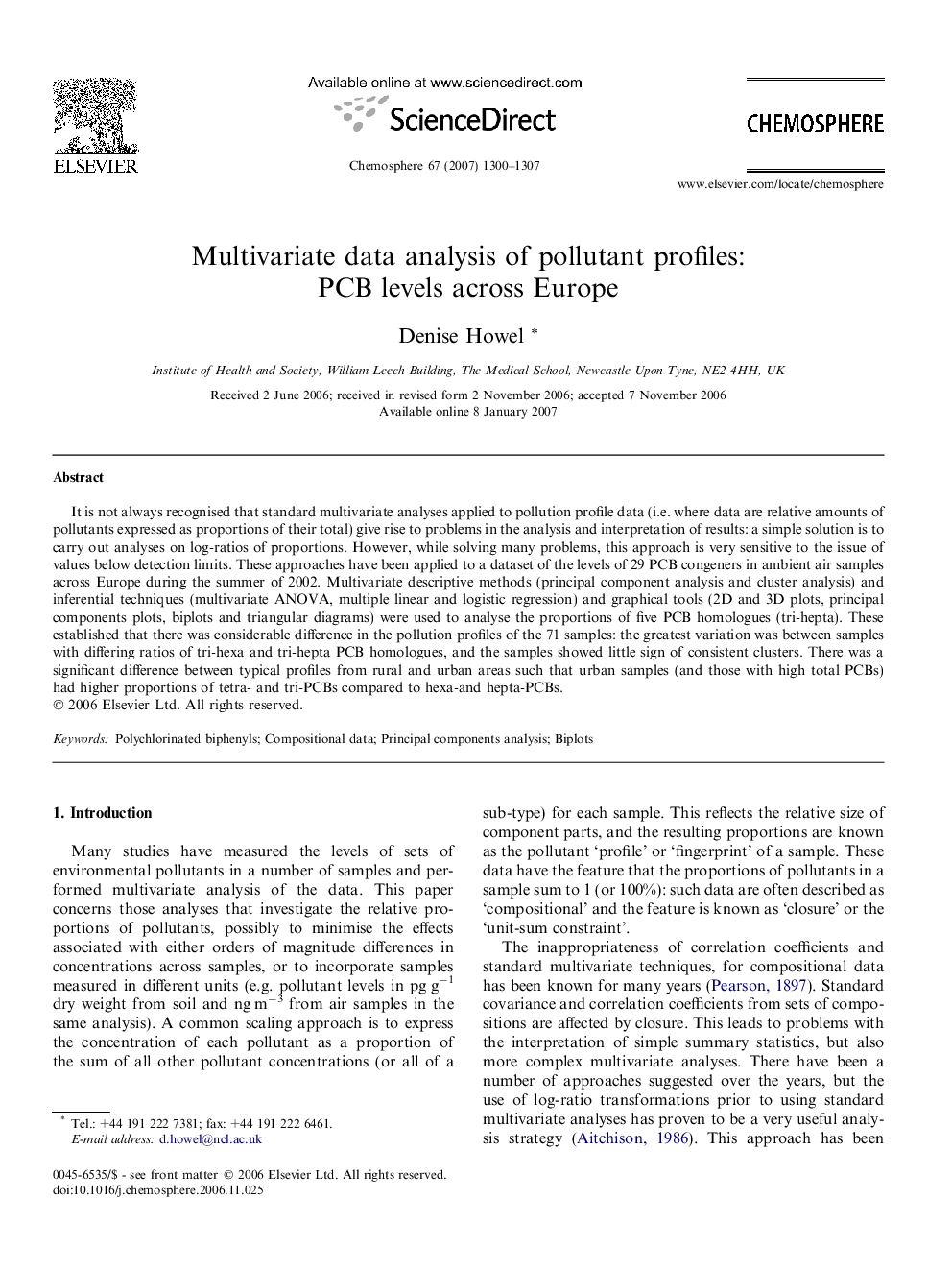| Article ID | Journal | Published Year | Pages | File Type |
|---|---|---|---|---|
| 4415950 | Chemosphere | 2007 | 8 Pages |
It is not always recognised that standard multivariate analyses applied to pollution profile data (i.e. where data are relative amounts of pollutants expressed as proportions of their total) give rise to problems in the analysis and interpretation of results: a simple solution is to carry out analyses on log-ratios of proportions. However, while solving many problems, this approach is very sensitive to the issue of values below detection limits. These approaches have been applied to a dataset of the levels of 29 PCB congeners in ambient air samples across Europe during the summer of 2002. Multivariate descriptive methods (principal component analysis and cluster analysis) and inferential techniques (multivariate ANOVA, multiple linear and logistic regression) and graphical tools (2D and 3D plots, principal components plots, biplots and triangular diagrams) were used to analyse the proportions of five PCB homologues (tri-hepta). These established that there was considerable difference in the pollution profiles of the 71 samples: the greatest variation was between samples with differing ratios of tri-hexa and tri-hepta PCB homologues, and the samples showed little sign of consistent clusters. There was a significant difference between typical profiles from rural and urban areas such that urban samples (and those with high total PCBs) had higher proportions of tetra- and tri-PCBs compared to hexa- and hepta-PCBs.
